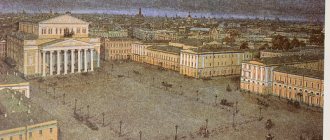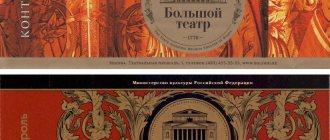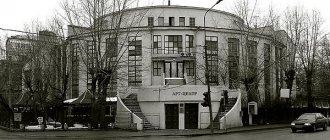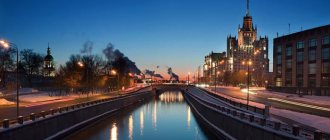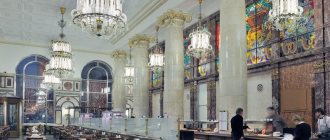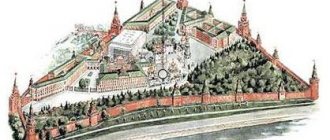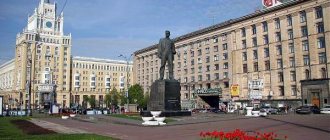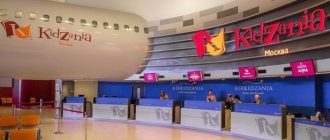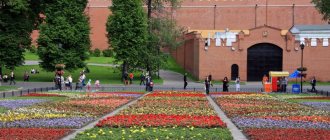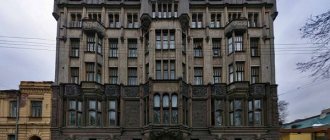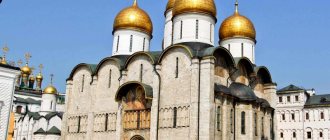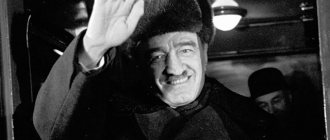The Bolshoi Theater in Moscow, located in the center of the capital, on Teatralnaya Square, is one of the symbols of Russia and the brilliant skill of its artists. Its talented performers: vocalists and ballet dancers, composers and conductors, choreographers are known all over the world. More than 800 works were staged on its stage. These are the first Russian operas and operas of such celebrities as Verdi and Wagner, Bellini and Donizetti, Berlioz and Ravel and other composers. World premieres of operas by Tchaikovsky and Rachmaninoff, Prokofiev and Arensky took place here. The great Rachmaninov conducted here.
Bolshoi Theater in Moscow - history
In March 1736, the provincial prosecutor, Prince Pyotr Vasilyevich Urusov, began construction of a theater building on the right bank of the Neglinka River, on the corner of Petrovka. Then he began to be called Petrovsky. But Peter Urusov failed to complete the construction. The building burned down. After the fire, his partner, the English entrepreneur Michael Medox, completed the construction of the theater building. This was the first professional theater. His repertoire included drama, opera and ballet performances. Both singers and dramatic actors took part in opera performances. The Petrovsky Theater was opened on December 30, 1780. On this day, the pantomime ballet “The Magic Shop” was staged by Y. Paradise.
Ballets with a national flavor, such as Village Simplicity, Gypsy Ballet and The Taking of Ochakov, were especially popular among the audience. Basically, the ballet troupe was formed by students of the ballet school of the Moscow Orphanage and serf actors of E. Golovkina’s troupe. This building lasted 25 years. It was destroyed in a fire in 1805. The new building, built under the leadership of K. Rossi on Arbat Square, also burned down in 1812.
According to the project of A. Mikhailov in 1821–1825. A new theater building is being built on the same site. The construction was supervised by the architect O. Bove. It was significantly increased in size. Therefore, at that time it received the name Bolshoi Theater. On January 6, 1825, the performance “The Triumph of the Muses” was given here. After the fire in March 1853, the building took three years to restore. The work was supervised by the architect A. Kavos. As contemporaries wrote, the appearance of the building “captivated the eye with the proportionality of the parts, in which lightness was combined with grandeur.” This is how it has survived to this day. In 1937 and 1976 the theater was awarded the Order of Lenin. During the Great Patriotic War, he was evacuated to the city of Kuibyshev. On November 29, 2002, the New Stage opened with the premiere of Rimsky-Korsakov's opera The Snow Maiden.
"A city to remember." 359. Theater Square and Bolshoi Theater
October 13, 2021 Photo project “City in Memory”. 359. Theater Square and Bolshoi Theater
The history of the Bolshoi Theater dates back to March 1776, when the provincial prosecutor, Prince Pyotr Urusov, received the highest permission from Empress Catherine II “to hold theatrical performances of all kinds, as well as concerts, vauxhalls and masquerades.” Even at the stage of construction of the Urusov theater, there was a fire and the prince handed over the business to his English partner Michael Medox, who built a three-story brick building under a plank roof. The opening of the Petrovsky (named after Petrovka Street) theater took place in 1780.
On the opening day, they gave a ceremonial prologue “Wanderers” by A. Ablesimov and the ballet “The Magic School” by L. Paradise to the music of J. Startzer. Then the repertoire was formed mainly from Russian and Italian comic operas with ballets and individual ballets. Whether in the 21st century or the 18th century, a rare private theater can survive without state subsidies, so Medox, experiencing financial difficulties, was forced to part with his brainchild. The Petrovsky Theater, transferred to the state treasury, received the status of the Imperial Theater. His troupe wandered around “rental venues” and performed in the Pashkov House, a new wooden theater building on Arbat Square, in Apraksin’s house.
After the expulsion of Napoleon's army, the city began to be reborn from the ashes of the fires, and in 1816 the Commission on the Structure of Moscow announced a competition for the construction of a new theater building on Petrovskaya Square, a mandatory condition of which was the inclusion of the burnt wall of the Meddox Theater in the construction. The authorities considered the project of competition winner Andrei Mikhailov to be too expensive and excessively large, inappropriate for the surrounding buildings. Its processing was entrusted to Osip Bova, who completely preserved the basics of Mikhailov’s composition, but significantly changed the proportions of the building, reducing its height from 41 to 37 meters and made adjustments to its exterior and interior decoration.
See old photos: Bolshoi Theater. 1854-1870: https://pastvu.com/p/25944 (first photograph of the Bolshoi Theater)
The theater, which opened on January 6, 1825, impressed its contemporaries. The facade of the monumental building was decorated with a portico on eight columns with a sculptural composition of Apollo on a chariot with three horses. It was then that the Bolshoi epithet was added to the name of the Petrovsky Theater. The writer Sergei Aksakov wrote: “The Bolshoi Petrovsky Theater, which arose from the old, charred ruins... amazed and delighted me... The magnificent huge building, exclusively dedicated to my favorite art, just by its appearance brought me into joyful excitement.”
The competent layout of the interior spaces included galleries for the passage of spectators, stairs leading to tiers, corner and side lounges for recreation and spacious dressing rooms. Despite the fact that the hall was designed for 2000 spectators, the opening of the theater caused an overcrowding. The prologue “The Triumph of the Muses” with choirs and dances, dedicated to the revival of the theater from ruins under the leadership of the Genius of Russia, was repeated the next day with a large crowd of audience.
Priority place in the repertoire was given to ballet and opera (the opera troupe arrived from St. Petersburg); the premieres of the operas “A Life for the Tsar” and “Ruslan and Lyudmila” by Mikhail Glinka took place on this stage. Although a regular fire service was created in Moscow even before the war, the effectiveness of firefighters left much to be desired, and on March 11, 1853, another disaster occurred - the theater burned down, as they say. The fire destroyed all the scenery, costumes, music, and even from the building itself, only the stone walls and columns of the portico survived.
The chief architect of the imperial theaters, Albert Kavos, won the new architectural competition, the builders worked hard, and already in August 1856 the first spectators crossed the threshold of the revived theater. As usual, it was opened “to coincide with the date” - the celebrations of the coronation of Emperor Alexander II. It is this building that we see when we walk along Theater Square today.
Its height, compared to the previous building, has increased by almost four meters. The portico with the columns of Beauvais was preserved, but a second pediment appeared, and the alabaster triple of Apollo was replaced by a quadriga cast in bronze. On the inner field of the pediment there is an alabaster bas-relief representing flying geniuses with a lyre. Galleries appeared along the side facades - inclined canopies on cast iron pillars.
But the most significant changes took place inside. Kavos designed the auditorium like a musical instrument, achieving unique acoustic properties. The sound quality was enhanced by wooden panels made of resonant spruce in the decoration of the walls, a wooden ceiling instead of iron, even the decor of the boxes made of papier-mâché. The six-tier hall accommodated almost 2,300 spectators. On both sides near the stage there were lettered boxes intended for the royal family, the Ministry of the Court and the theater directorate, and in the center there was a ceremonial royal box.
“I tried to decorate the auditorium as luxuriously and at the same time as lightly as possible, in the taste of the Renaissance mixed with Byzantine style. The white color strewn with gold, the bright crimson draperies of the interior boxes, the different plaster arabesques on each floor and the main effect of the auditorium - a large chandelier of three rows of lamps and candelabra decorated with crystal - all this earned universal approval,” wrote architect Albert Kavos.
On the ceiling around the chandelier, Academician A. Titov painted the painting “Apollo and the Muses”, and the artist allowed himself some prank, depicting the muse of painting he had imagined - with a palette and brush in his hands. The first curtain was created by the Italian artist Casroe Dusi and depicted “The Entry of Minin and Pozharsky into Moscow.” Since 1896, at the beginning and at the end of the performance, a new curtain was used, “View of Moscow from the Sparrow Hills,” and during the intermission, “The Triumph of the Muses” (both were created by the artist P. Lambin).
By the end of the 19th century, it became clear that the theater stood on wooden stilts, which had an unpleasant tendency to rot, causing the building to settle and cracks in the walls. Urgent repairs to the foundation partially saved the situation, but in 1902 the wall subsided right during the performance and the doors of the middle boxes jammed. However, the problem with the foundation soon faded into the background, because a revolution broke out, radically getting rid of everything that was of the old regime.
The very existence of the Bolshoi Theater was under threat, but in 1922 the Presidium of the All-Russian Central Executive Committee decided to consider the closure of the theater economically inexpedient. By that time, the Bolshoi had already received the status of an academic theater. All-Russian Congresses of Soviets, meetings of the All-Russian Central Executive Committee, and congresses of the Comintern were now held in its hall. From the stage of the Bolshoi Theater, the creation of a new state was proclaimed - the Union of Soviet Socialist Republics.
In the twenties, work was carried out in the theater to strengthen the wall, which served as a support for the arches of the corridors and the entire auditorium. The emergency work was led by the architect I. Rerberg, and then followed by the redevelopment of the stairs, the creation of new rehearsal halls and artistic restrooms, and a major reconstruction of the stage.
In the Soviet years, three new curtains appeared to replace the pre-revolutionary ones, all created with the participation of the artist Fyodor Fedorovsky: since 1920 - a sliding curtain made of bronze-painted canvas, since 1935 - a curtain with the dates of revolutionary events “1871, 1905, 1917” (Paris Commune, December armed uprising and the Great October Socialist Revolution), but the most famous, since 1955, is “golden”, brocade with woven state symbols of the USSR.
See old photos: Bolshoi Theater. Disguise. 1941: https://pastvu.com/p/501582
By the beginning of the Great Patriotic War, the theater was closed for repairs, part of the troupe was evacuated to Kuibyshev, and the rest went into the army and performed as part of front-line brigades. On October 22, 1941, an aerial bomb hit the building, causing significant damage. In particular, the sculptures of the muses Erato and Terpsichore on the façade were destroyed. They were replaced by copies that were very different from the originals. After restoration work, the Bolshoi reopened in 1943 with a production of the opera Ivan Susanin, formerly known as A Life for the Tsar.
The Bolshoi Theater became a symbol of theatrical art of the Soviet Union. Prima ballerinas Maya Plisetskaya, Galina Ulanova, Ekaterina Maksimova, dancers Vladimir Vasiliev, Maris Liepa, Yuri Grigorovich, members of the opera troupe Sergei Lemeshev, Ivan Kozlovsky, Nadezhda Obukhova, Elena Obraztsova, Galina Vishnevskaya, Evgeniy Nesterenko, Zurab Sotkilava and dozens of other talented artists sold out shows on tour in every country in the world.
Directors Francesca Zambello, Eimuntas Nekrosius, Declan Donnellan, Robert Sturua, Peter Konvicny, Temur Chkheidze, Robert Wilson, Graham Vick, Alexander Sokurov, choreographers Roland Petit, John Neumeier, Christopher Wheeldon, Angelin Preljocaj, Wayne McGregor worked at the theater.
However, the popularity of the Bolshoi was also a reason for jokes. Remember Yuri Vizbor: “And also in the field of ballet, we are ahead of the rest!” Or an episode from Leonid Gaidai’s comedy about student Shurik: “And it’s not for nothing that all continents applaud the workers of our big ballet... - Well, okay, come on, bay to me, like spaceships plow... Bolshoi Theater.”
The building of the former Rus Hotel was built in 1895 according to the design of the architect V. Zagorsky. Now there are rehearsal halls and opera classes here, this is the administrative and auxiliary building of the Bolshoi Theater.
See old photos: Kop'evsky Lane. The building of the former hotel "Rus". 1968-1970: https://pastvu.com/p/326674
On November 29, 2002, the New Stage of the Bolshoi Theater opened with the premiere of Rimsky-Korsakov’s opera “The Snow Maiden” and it was possible to begin a large-scale reconstruction of the historical building, the wear of which, according to various estimates, ranged from 50 to 70 percent. Complex work on the Main Stage lasted from 2005 to 2011 and was carried out in two directions - scientific restoration of the interiors and the creation of new service premises underground.
As a result, the auditorium and part of its enfilade acquired the appearance in which the architect of the Bolshoi Theater, Albert Kavos, intended them. The rooms of the enfilade of the auditorium were restored: the Main Entrance Hall, the White Foyer, the Choir Hall, the Exposition Hall, the Round Hall and the Beethoven Hall. Exact copies of the sculptures of Erato and Terpsichore returned to the facade, but Apollo, once created by the sculptor Pyotr Klodt, acquired a new accessory - a fig leaf. The masculinity of the Sun God, the patron of music and the arts, can be observed on the hundred-ruble banknote.
The modern repertoire can be found on the official website: https://www.bolshoi.ru Perhaps the most informative post about the history and restoration of the Bolshoi Theater: https://expertmus.livejournal.com/86418.html
See old photographs: The auditorium and stage of the Bolshoi Theater. 1954: https://pastvu.com/p/456463
See old photos: Bolshoi Theater. 1974: https://pastvu.com/p/266808 In the central box, US President Richard Nixon and General Secretary of the CPSU Central Committee Leonid Brezhnev.
See old photos: Curtain at the Bolshoi Theater. 1975-1982: https://pastvu.com/p/50048
Bolshoi Theater prima ballerina Svetlana Zakharova: “For me, this is an unusual and very favorite project, where during the evening I can demonstrate with the best dancers in the world that the art of ballet is incredibly diverse. Three different mini-performances, incredible in emotional intensity, but united by a common feeling, whose name is love. That is why we called the program “Amore”.
Festival "Circle of Light" (2013)
Considering the density of theaters per square meter of land, in the 1820s Petrovskaya Square was quite logically renamed Teatralnaya Square and bore this name until 1919. The Bolsheviks hastily began to rid Moscow of old regime names and create a new cult. For various reasons, the creators of the revolution began to leave one after another and their memory was immortalized in the names of streets and squares. The theater was given the name of Yakov Sverdlov, who, according to the official version, died during the Spanish flu epidemic. In 1991, the name Teatralnaya Square returned to the maps of Moscow.
By the way, about cards. If on the Plan of the Capital City of Moscow of 1843 Teatralnaya Square is indicated as a small space near the Bolshoi, then on the Level Plan of Moscow of 1888 it moved south almost to the Kitaygorod wall, and the space between the theaters is marked as Teatralny Parade Ground.
Plan of the Capital City of Moscow. 1843: https://www.retromap.ru/
Leveling plan of Moscow. 1888: https://www.retromap.ru/
See old photographs: Review of the troops of the Moscow garrison. 1904: https://pastvu.com/p/111155
This unpaved area, difficult to pass during muddy times, was given to the military in the 1830s for parade parades.
The appearance of the monument to Karl Marx and the renaming of Resurrection Square to Revolution Square caused some confusion and controversy. On the website https://mosday.ru/forum/viewtopic.php?t=2989 you can read the discussion of townspeople about the modern boundaries of Teatralnaya and where Marx is installed: on Teatralnaya (Sverdlova), in the park near the monument to Marx, or even on Revolution Square? It can be assumed that many random passers-by would answer - of course, with the Revolution.
Lev Kerbel carved a sculptural image of the founder of scientific communism from a single block of granite, emphasizing the fundamentality of the teachings of Karl Marx. The monument was opened in 1961.
The tradition of November communist marches has been preserved since pre-war times.
See old photos: Sverdlov Square. 1936: https://pastvu.com/p/637892 Demonstration on the occasion of the anniversary of the Great October Socialist Revolution.
Metro trains pass under the square. The opening of the Sverdlov Square station (modern name - Teatralnaya) took place on September 11, 1938 as part of the Sokol - Sverdlov Square section of the second stage of the Moscow Metro. Despite the fact that the station was originally called “Sverdlov Square” (in memory of the professional revolutionary Yakov Sverdlov), in its design the architect tried to express a theatrical theme: the station itself evokes associations with a theater hall, the columns resemble backstage, and the space between the columns is a curtain . According to the architect I. Fomin, the station “should serve as the antechamber of Theater Square and express the great joy of the liberated art of all the peoples of our country.”
The construction of the metro in Moscow continued during the war; in the forties, Sverdlov Square became part of the central interchange hub: on December 30, 1944, the transition to the Okhotny Ryad station was opened, and on May 9, 1946, the transition to Revolution Square was opened. . Over the years, the direction of passenger flows has changed somewhat and not all townspeople notice the two bas-reliefs on ballet themes - to see them, you need to look back while climbing the stairs. And one crossing bridge is completely closed; there is a third bas-relief hidden from view on the wall.
This is a sketch of a design option for the station in 1937: instead of people of art, the majolica bas-reliefs were supposed to depict athletes.
Mosmetro employees cleaning Teatralnaya station
The park preserves one of the oldest Russian fountains, created by the architect Ivan (aka Giovanni) Vitali, a St. Petersburg sculptor with Italian roots. The fountain was built in 1835 and, although it is decorated with figures of cupids, symbolizing different genres of art, this object is not decorative, but quite functional and was built as a water fountain for the Mytishchi water supply system. Water from the village of Bolshiye Mytishchi was supplied to the Alekseevskaya pumping station, then to the reservoir of the Sukharevskaya Tower and from there distributed among five fountains, from which water could be poured for a fee, and drinking bowls were provided for horses.
See old photographs: Vitali Fountain and panorama of Resurrection Square. 1870-1875: https://pastvu.com/p/831
See old photos: Theater Square. Vitali Fountain. 1913: https://pastvu.com/p/109
On both sides of the square there are hotels - “Continental” and “Metropol”. The first one was rebuilt in 1887 by the architect A. Beloyartsev from the building of the Senate Printing House. During the October battles of 1917, the fiercely resisting “whites” settled in the hotel and in memory of the battles in the vicinity of the Kremlin, Resurrection Square was renamed Revolution Square.
See old photos: Hotel Continental. 1908: https://pastvu.com/p/17726
In 1932-1935, according to the design of architects L. Savelyev, O. Stapran and A. Shchusev, the Moscow Hotel was built, but the Continental survived, because the construction of the second stage of the Moscow began much later, already in the era of developed socialism . In 1972, the pre-revolutionary building was demolished, leaving only the memories of old-timers about the experimental stereo cinema “Vostok-Kino” located in it.
And opposite, since the 1830s, there was a three-story hotel of the merchant Chelyshev, built according to the design of the same Osip Bove.
See old photographs: Hotel of the merchant Chelyshev. 1882-1890: https://pastvu.com/p/60231
At the end of the 19th century, industrialist Savva Mamontov bought the building and adjacent plots of land to implement his idea - to build, so to speak, “a cultural and leisure center with a hotel complex, restaurants, and a theater” called “Metropol”. The project did not envisage the demolition of the old hotel, but its radical reconstruction and unification with a common façade with new buildings.
But something went wrong, Mamontov’s business plans collapsed, and the entrepreneur himself found himself under arrest. The new owners invited architects Lev Kekushev and Nikolai Shevyakov as co-authors, and significant changes were made to William Walcott's original design. For example, the central hall of the complex, designed in the form of an atrium covered with a glass dome and planned as a theater hall with a capacity of 3,000 spectators, was converted into a restaurant.
The hotel, equipped with all the technical innovations of the beginning of the century - electricity, telephone communications, refrigerators and elevators, received its first guests on March 5, 1905. During the revolutionary days, the Metropol, like the Continental, became a stronghold of the cadets and only artillery shelling forced them to leave the building. In 1918, the Soviet government moved the capital from Petrograd to Moscow and the Metropol temporarily became the government residence.
Throughout the Soviet period, the fashionable hotel received the most honorable guests; Bernard Shaw, Bertolt Brecht, Mao Zedong, Marlene Dietrich, John Steinbeck and many other world celebrities lived here. From 1986 to 1991, work was carried out in the building to restore the original facades and interiors, after which the hotel was awarded five-star status. The new owners treated the heritage with care, removing layers of paint and restoring the original wall paintings and restoring decorative elements.
Photos: Evgeny Chesnokov
In the next story - Suschevsky Val...
All photo stories of the “City in Memory” project:
Category: Personal blogs. Tags: Moscow, Bolshoi Theater, city for memory, walks around Moscow, Theater Square, Teatralnaya station.
Other publications
Evgeny Chesnokov 02/09/2021 at 00:05
"A city to remember." 639. Stoleshnikov Lane
The origin of the name Stoleshnikov Lane is related to the weaving craft - the word “stoleshnik” in the old days meant “tablecloth”.
Evgeny Chesnokov 01/22/2021 at 00:16
"A city to remember." 638. Povarskaya street - Kekushev, Vesnin, Tolstoy, Mikhalkov
The final stretch of Povarskaya Street presents architectural delights and urban stories for every taste.
Evgeny Chesnokov 01/21/2021 at 18:00
"A city to remember." 637. Povarskaya street - Bunin, Gilardi, Gorky, Gnesiny
The walk along Povarskaya Street continues.
Every house, every estate here is associated with the names of outstanding cultural figures. Evgeny Chesnokov 01/19/2021 at 02:04
"A city to remember." 636. Povarskaya street - Vorovsky, Themis, Kalmeer
In ancient times, the Volotsk trade road, leading from Moscow to Veliky Novgorod, ran along the route of what is now Povarskaya Street.
Evgeny Chesnokov 01/13/2021 at 01:28
"A city to remember." 635. Moscow cinemas. "Ural" - "Yantar"
The audit showed that in recent years, Soviet-built cinemas have suffered heavy losses, but those that still exist continue to fight for viewers.
Evgeny Chesnokov 01/11/2021 at 23:30
"A city to remember." 634. Moscow cinemas. "Sayan" - "Ulaanbaatar"
At the Sputnik cinema in Lefortovo, viewers can not only watch new films, but also visit an exhibition of rare film projection equipment.
Evgeny Chesnokov 01/10/2021 at 22:48
"A city to remember." 633. Moscow cinemas. "Polar" - "Saturn"
The most famous Moscow cinema was called "Russia", it opened in 1961 and retained the original sign on the facade.
The hall is currently rented by the Musical Theatre. Evgeny Chesnokov 01/09/2021 at 23:19
"A city to remember." 632. Moscow cinemas. "Eagle" - "Flight"
As the guidebook “Around Moscow” wrote in 1954, “in the fifth five-year plan it is planned to build 27 new well-equipped cinemas with 12,500 seats in Moscow.”
Evgeny Chesnokov 01/08/2021 at 12:33
"A city to remember." 631. Moscow cinemas. "Ladoga" - "Orbit"
The maintenance and repair of cinemas required serious expenses and cinema administrations had no choice but to rent out the premises.
Evgeny Chesnokov 01/07/2021 at 17:50
"A city to remember." 630. Moscow cinemas. "Zvezdny" - "Kuntsevo"
The third part of the review of Soviet cinemas included a unique technical attraction - the Circular Cinema Panorama, which opened on June 16, 1959 at VDNKh.
Evgeniy Chesnokov 01/06/2021 at 22:30
"A city to remember." 629. Moscow cinemas. "Volga" - "Zvezda"
The Moskino chain operates successfully in Soviet-built buildings, saving 13 large and small cinemas from closure.
Evgeniy Chesnokov 01/05/2021 at 00:53
"A city to remember." 628. Moscow cinemas. "Avangard" - "Vladivostok"
“A City in Memory” made inquiries about 138 cinemas that operated in Moscow in the 1970s and 1980s.
Evgeny Chesnokov 12/23/2020 at 02:08
"A city to remember." 627. Pebbles and “Moscow City”
Kamushki is the name given to the Presnensky residential microdistrict, located almost on the very bank of the Moscow River on the site of the old Dorogomilovsky quarries.
11/23/2020 at 11:28 am
Life in the red zone
Everyday life of the Covid hospital at VDNKh.
Evgeny Chesnokov 09.11.2020 at 22:51
"A city to remember." 625. Krasnokazarmennaya street
Another Lefortovo story is dedicated not to the times of Peter the Great or Catherine, but mainly to Soviet science and students.
Evgeniy Chesnokov 08.11.2020 at 13:34
"A city to remember." 624. Rogozhskaya Sloboda
The Rogozhskaya Sloboda owes its origins to Empress Catherine II, who allocated land to the Old Believers in gratitude for their contribution to the fight against the plague epidemic.
Architecture
The building that we can now admire is one of the best examples of Russian classical architecture. It was built in 1856 under the direction of architect Albert Kavos. During restoration after the fire, the building was completely rebuilt and decorated with a white stone portico with eight columns. The architect replaced the hipped roof with a gable roof with pediments, repeating the shape of the portico pediment along the main façade and removing the arched niche. The Ionic order of the portico was replaced by a complex one. All exterior details have been changed. Some architects believe that Kavos's changes diminished the artistic merit of the original building. The building is crowned by the world-famous bronze quadriga of Apollo by Pyotr Klodt. We see a two-wheeled chariot with four harnessed horses galloping across the sky and the god Apollo driving them.
author: Rebrov Alexander
Quadriga
A plaster double-headed eagle, the state emblem of Russia, was installed on the pediment of the building. On the ceiling of the auditorium there are nine muses with Apollo at their head. Thanks to the creativity of Albert Kavos, the building fits perfectly into the surrounding architectural structures.
The five tiers of the auditorium can accommodate more than 2,100 spectators. In terms of its acoustic properties, it is considered one of the best in the world. The length of the hall from the orchestra to the back wall is 25 meters, width - 26.3 meters, height - 21 meters. The stage portal is 20.5 by 17.8 meters, the depth of the stage is 23.5 meters. This is one of the beautiful architectural structures of the capital. It was called "the palace of sun rays, gold, purple and snow." The building also hosts important state and public celebrations.
Great Theater or Temple of Apollo
A competition was again announced for the restoration of the building, in which Kavos's project won. In general, he retained Bove's idea, but increased the height of the building and changed its proportions. This is a drawing of Kavos's project.
Restoration work lasted three years, and the grand opening of the renovated building took place in 1856: Bellini’s opera “The Puritans” was staged in the theater.
And here is another interesting fact: during the fire, the alabaster sculpture of Apollo above the main entrance was destroyed, and it was replaced by a bronze quadriga by Peter Klodt. I wonder why a sculpture of Apollo was once installed above the main entrance to the theater? And most importantly: the theater building is very similar in its outline to the Temple of Apollo.
I wonder what the Orthodox Church of that time thought about this, which, according to the official historical version, was widely popular among the people and generally had great power and influence on all processes in society? And how did it happen that the Temple of Apollo suddenly appeared in the center of Moscow? Or maybe the external resemblance of the theater building to the Temple of Apollo and the presence of his statue above the entrance is just a coincidence? Or maybe during this historical period Orthodoxy was not so popular and influential? What do they say about the date of the baptism of Rus'? 988? Why was the Temple of Apollo built in the center of Moscow in the 18th–19th centuries? By the way, the St. Petersburg Bolshoi Theater is decorated with a sculpture of Minerva. Also probably a coincidence. The next thing. Ten years later, the Bolshoi Theater building also underwent some restoration work: the rear side of the theater was reconstructed, and a few years later the foundation was reconstructed, but overall the building retained its shape.
Reconstruction of the Bolshoi Theater
In 2005, the reconstruction of the theater began and after 6 years of colossal work, on October 28, 2011, the opening of the country's main stage took place. The area of the Bolshoi Theater doubled and amounted to 80 thousand square meters, an underground part appeared and the unique acoustics of the hall were restored. The stage now has the volume of a six-story building, all processes in which are computerized. The paintings in the White Foyer have been restored. The jacquard fabrics and tapestries in the Round Hall and the Imperial Foyer were restored by hand over the course of 5 years, restoring every centimeter. 156 craftsmen from all over Russia were engaged in gilding the interiors, 5 microns thick, covering an area of 981 square meters, which took 4.5 kg of gold.
There were 17 elevators with buttons for floors from the 10th to the 4th, and an additional 2 floors located below were occupied by mechanics. The auditorium seats 1,768 people, before reconstruction - 2,100. The theater buffet moved to the 4th floor and this is the only room where windows are located on both sides. Interestingly, the tiles in the central foyer were made in the same factory as in the 19th century. The chandelier with a diameter of more than 6 meters with gilded pendants is especially beautiful. The new curtain is embroidered with a double-headed eagle and the word Russia.
The modern Bolshoi Theater includes opera and ballet troupes, a stage and brass band and the Bolshoi Theater Orchestra. The names of the opera and ballet school are the heritage of all of Russia and the entire theatrical world. More than 80 artists were awarded the title of People's Artists of the USSR during the Soviet period. The title of Hero of Socialist Labor was given to eight stage masters - I. Arkhipova and Y. Grigorovich, I. Kozlovsky and E. Nesterenko, E. Svetlanov, as well as world-famous ballerinas - G. Ulanova, M. Plisetskaya and M. Semyonova. Many artists are People's Artists of the Russian Federation.
The Bolshoi Theater in Moscow represents one of the world's main theater stages. He played an outstanding role in the formation of the Russian musical and stage school and in the development of Russian national art, including the famous Russian ballet.
